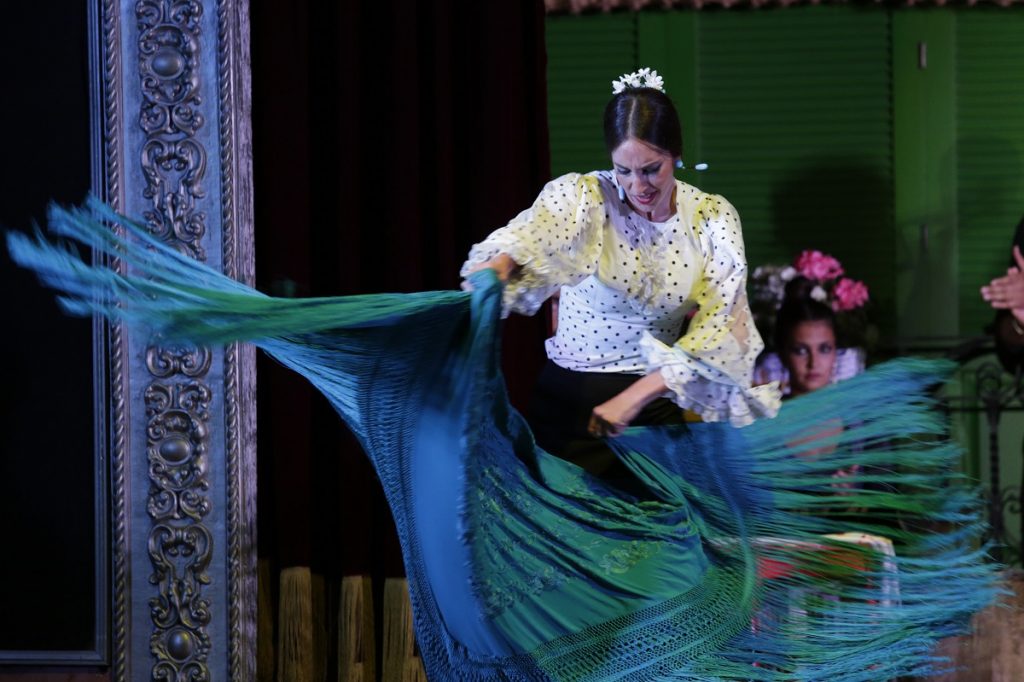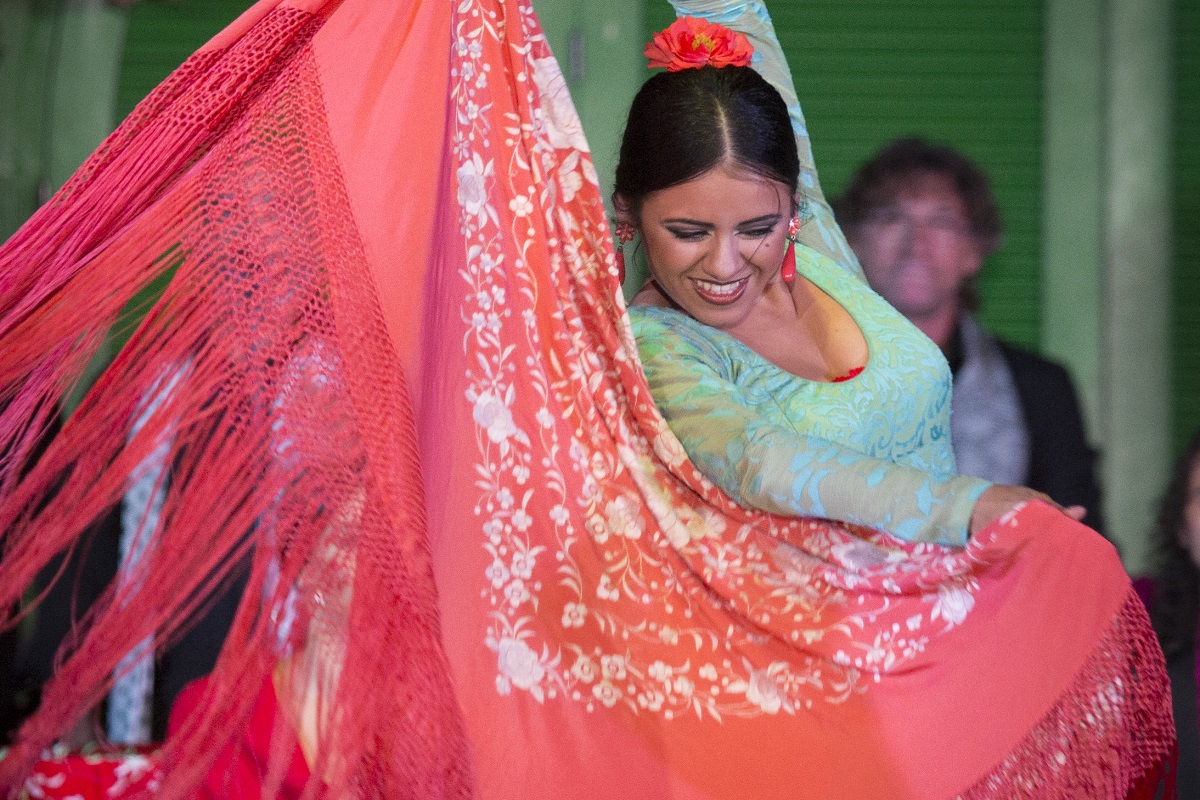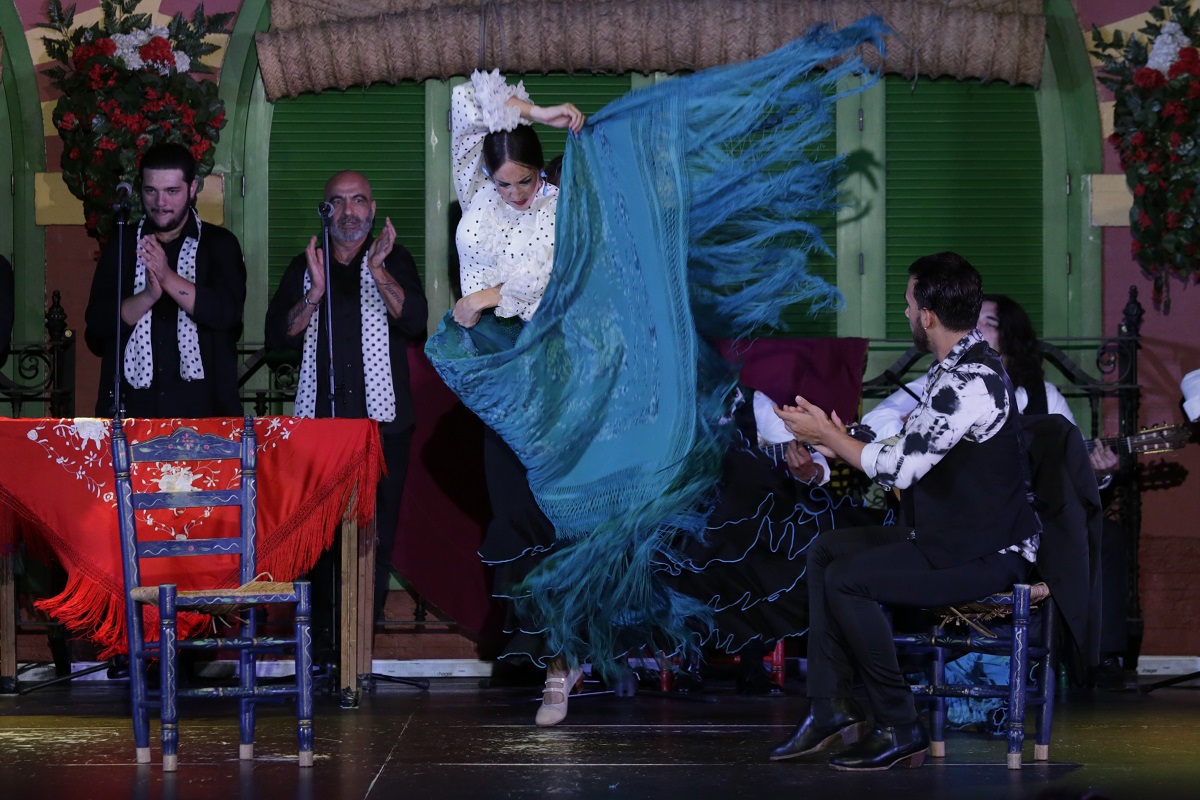
Have you noticed how in some flamenco dancing the dancer uses a shawl as a complement to her performance? The flamenco shawl or Manila shawl is an element that gives grace and charm to flamenco dancing. A complement that women also use outside of this art, since it has become a benchmark of Spanish culture, although its origin is far from this country.
If you want to know how flamenco has made it theirs, where and how you got here, you’re in the right site because invites you to delve a little into the history of the flamenco shawl or Manila shawl, a denomination, the latter that ‘confuses’ its true origin.
This piece is a complement to flamenco dress and an essential for the interpretation of some flamenco dances. Although flamenco has made it theirs, it is a piece that is also used as a feminine complement for other types of events. But as in everything, the shawl has also undergone an evolution from its origins to our days.
Although originally from China, the name has inherited from the capital of the Philippines, Manila because from here came to Spain. It appeared for the first time in the year 600 a.c .. Yes, you read correctly, it is a very old piece. The Chinese discovered silk and were the first to embroider with silk thread, hence it is in this country where this garment emerged.
The Philippines was a Spanish colony and during the sixteenth century the maritime trade route from Manila to Seville was very active, which is why Andalusia began to import the shawl. During the 18th century, the use of the shawl in Spain was popularized as a complement to women’s clothing. And from then until today, the shawl has evolved, especially in regard to decorative motifs. At first they had oriental references, such as dragons or bamboo, embroidery that was replaced by flowers or the addition of fringes.

The shawl became a symbol of elegance and fashion reference of the time, an element that also drew attention to the great painters who immortalized this complement in their paintings, where women with shawls appear. Later flamenco incorporated the shawl into their clothing and made it a fundamental piece in the interpretation of some flamenco styles.
Usually, the Manila shawl is worn over the shoulders and its size varies, but it is best to cover the back and the ends reach the fingertips of each hand with arms outstretched. Some women wear it on their hips knotted aside. But the most usual thing is to use it to cover the back or on one shoulder.
The flamenco shawl gives elegance and beauty to the dance thanks to the movements of the flamenco dancer. Getting that showiness is not easy, since it requires a good technique. It is not simply a matter of shaking the shawl, but rather that it must be done in time and that this be an extension of the bailaora’s body. Let the shawl dance with the movement of the artist’s arms with the appropriate rhythm and strength.
Depending on the style that is played, the accent of the movement varies. The shawl can move close to the arms of the dancer accompanying the arm movement; shake ahead or behind; accompanying the balancing of the body; making circular movements with one hand; or imitating the movement of a cloak, among others.

Like everything, the shawl also has its technique, a technique that must be mastered so that the artist can be seen with ease and security on stage. Achieving this balance requires a great mastery of the dance and a lot of practice so that each movement possesses the appropriate charm in the execution of the flamenco suit.
The flamenco shawl is one of the most beautiful accessories for dance due to its color, movement and elegance. At El Palacio Andaluz, you can see how our flamenco dancers master the technique perfectly, leaving special prints during their performances with the shawl in our daily shows.
If you visit Seville and want to enjoy a unique flamenco show, come see how our dancers move the Manila shawl.
© 2024 El Palacio Andaluz. All rights reserved.